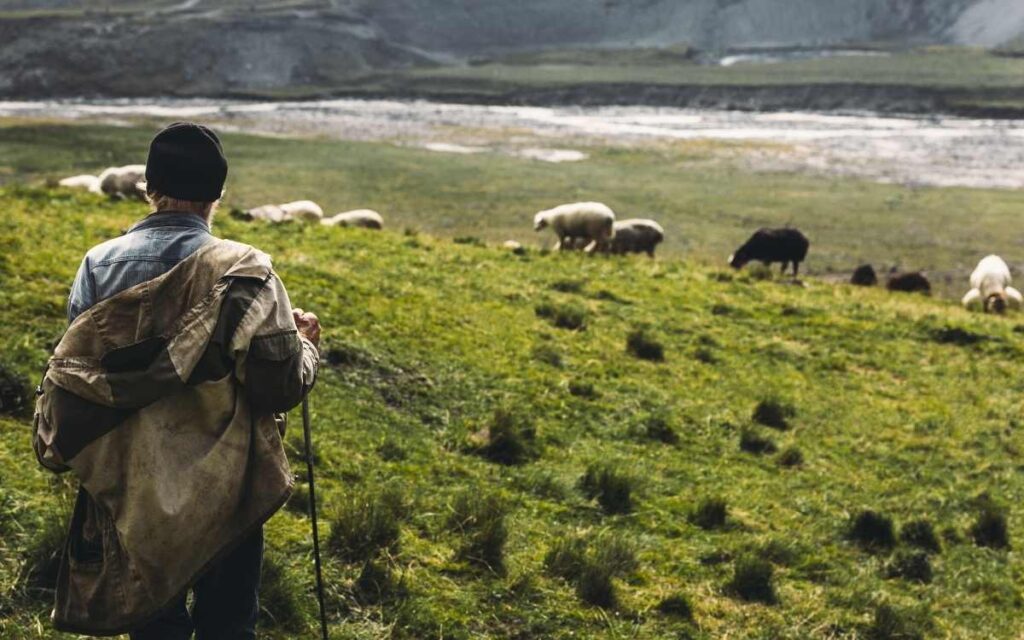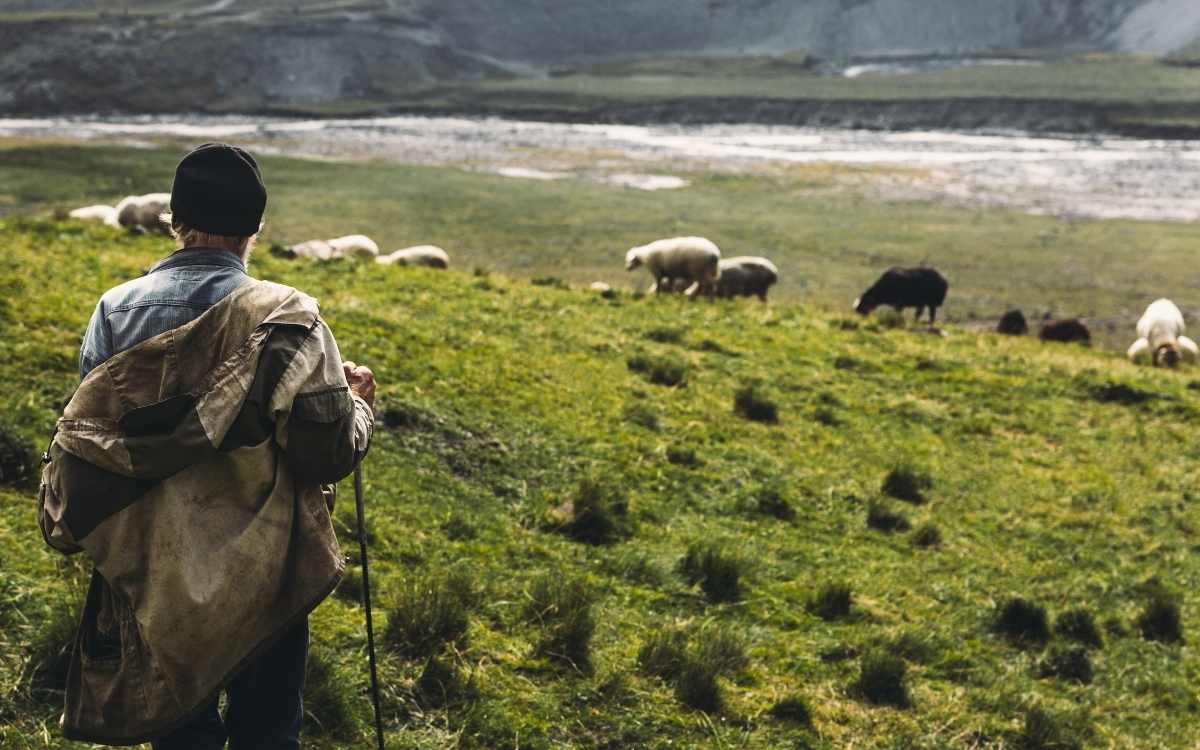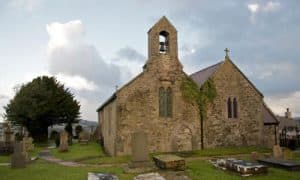CLAIRE BARRAND recalls local folktales and legends from her youth growing up in Powys, South Wales…

The best folklore tales are always the ones that you heard about from a family friend or relative about a place local to you as a child.
The stories that would make your eyes widen with awe, and keep you awake at night thinking about them. For me, one of these stories is the one of The Lonely Shepherd.
Just less than a mile away from my home, on the top of Mynydd Llangatwg (Llangattock Mountain) stands a limestone pinnacle.
Opposite Clydach Gorge overlooking Gilwern and Llangattock this huge stone is known locally as The Lonely Shepherd, and of course, it has a legend attached to it.
The story of The Lonely Shepherd
The stories do vary slightly depending on who is doing the telling but fundamentally remain the same.
The stone is said to have once been a man, a shepherd that was turned to stone by a witch.
He was said to have been incredibly cruel to his wife, so much so that she was so miserable by his beatings and brutality that she drowned herself in the River Usk.
The farmer was turned to stone for his evil ways by a local witch. But at midnight on Midsummers Eve, he walks down the mountain as the rock in search of his wife, calling out her name and searching for her to return.
It was customary in the locality to whitewash the stone before this event each year so that he would be clearly seen from below.
It was also said that if a woman in Gilwern died on Midsummer night’s eve, then the Lonely Shepherd has claimed her for his wife!
Large stones in British folklore
There are many large stones in British folklore that have ancient lore attached to them because large rocks on the landscape implore an explanation.
It was thought they must be the Devil’s work!
The dull part of this story is that this particular rock was left there by quarry workers who possibly left it as a memorial to the many men that lost their lives there.
There are some cairns scattered across the same hill that are thought to be of Neolithic age.
Cairns is the most commonly used Scottish word (Welsh – Carn or Carnedd) for man-made piles of stones that were built for many reasons such as for defence or hunting, ceremonial purposes sometimes in association with astronomy or as burial places.
There are also interestingly some extensive cave systems underground near to The Lonely Shepherd including two of the longest in Britain.
Tales of stones and Tylwyth Teg fairies
The entire area is steeped in folkloric history, and rumors of Faerie (Tylwyth Teg) activity is rife here.
It certainly has all the elements any self-respecting ancient Faerie would ask for!
Could it be that this mountain is a fairy fort, with its underground caves and tunnels being a passageway to otherworldly realms?
Indeed, I would say that the area is sacred and advise people that to litter here or cause any damage would be risking the wrath of the Pwca, a malevolent fairy who can do unpleasant things when riled!
Annelly and Pwca, a malevolent fairy
One such story is of a local man named Annelly, who was walking home via Gilwern one evening when he met a small strange looking man that asked him to help carry his bundle.
Annelly agreed, and as a reward, the odd little man (who was indeed one of the Fae folk) took Annelly to a cave nearby and showed him a secret chamber filled with gold.
He told the amazed man that he was allowed to visit this chamber only once a week and take just enough gold to fill his mouth.
Of course, Annelly was one day overcome with greed, and he stuffed his pockets full with as much gold as he could.
This caused the Fairy man to become enraged with anger, and he threw Annelly down a ravine as his body fell all the gold spilled out of his pockets.
I spent many nights watching the horizon of the mountain at sunset on Midsummer night’s eve as a teenager because my bedroom window had a direct view of him.
Always hoping I would see him move, I never did, but I still live in hope.
Perhaps this year I will take a walk and sit there next to him, but if I don’t return, please look out for a second rock that wasn’t there before…






